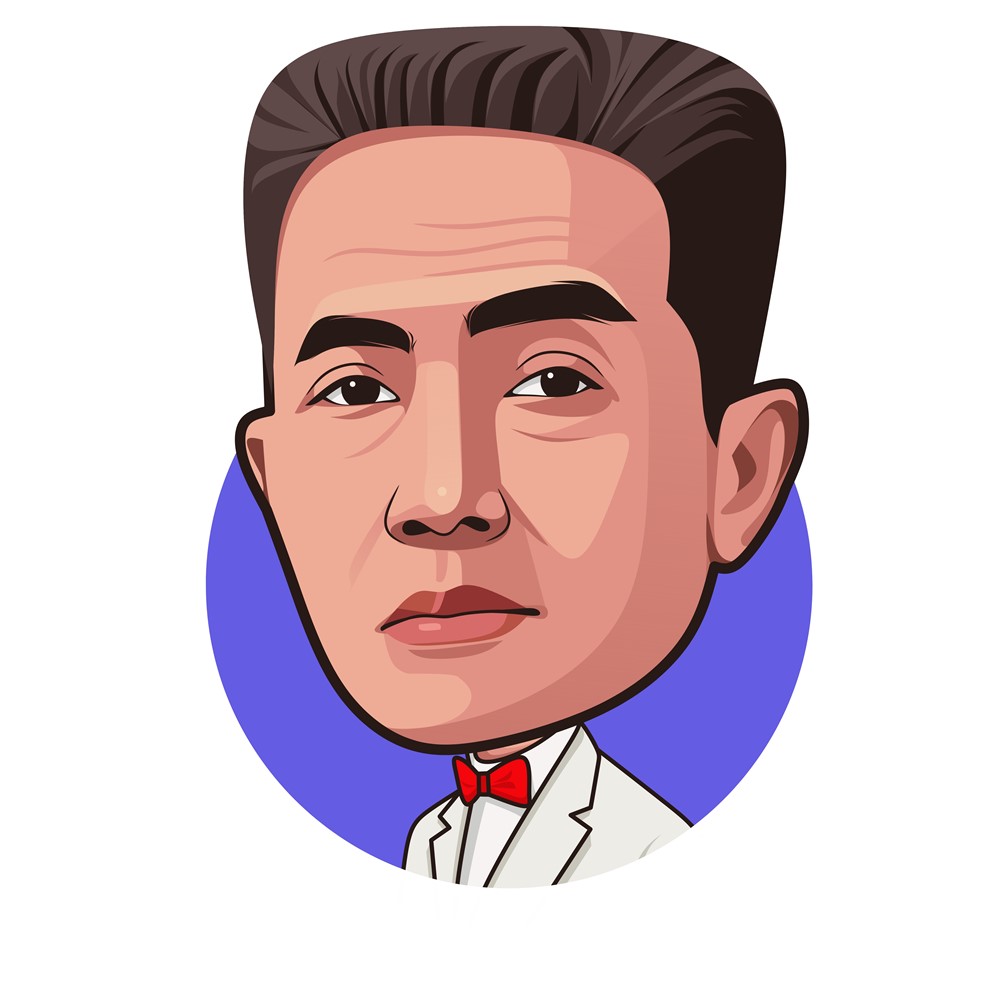
A Filipino statesman, military leader, and revolutionary, Emilio Aguinaldo Y Famy was recognized as the first and youngest president of the Philippines. His achievements made him the first president of a constitutional republic in Asia. He was a member of the nationalist movement and served as the first president of the Philippine Republic after the end of the Spanish-American War.

Emilio Aguinaldo attended elementary and secondary school at Colegio de San Juan de Letran, but dropped out before completing his high school education. After his father’s death in 1883, Emilio stayed at home to help his mother manage the family’s agricultural holdings. Later on, he served as a senator and was elected president of the Philippines.
Aguinaldo was born into a family of political power and wealth in Cavite. He was the mayor of Kawit in 1878, and was later a member of the secret nationalist brotherhood, the Katipunan. He fought the Spanish colonists and won major victories in Cavite Province.
Emilio Aguinaldo fought the Spanish and gained independence. He was also a vocal advocate for Filipino independence. He also worked to get former rebel fighters access to land and pensions. In 1930, he married Maria Agoncillo, the niece of a prominent diplomat. In 1935, he ran for the Philippine Commonwealth. He was defeated by Manuel Quezon in the election.
Aguinaldo later claimed that the American government had made a promise to the Philippines that would give it independence under American protection. This was not a good thing for the Filipino people. The American government, however, remained firm in its refusal to recognize the Philippine people as a sovereign nation.
During the Spanish occupation, Aguinaldo was under intense pressure from the Spanish. In December 1897, the Spanish and Aguinaldo negotiated a peace treaty. The agreement stipulated that the Spanish would grant the Philippines self-rule in three years. In return, the rebels would be compensated with 800,000 pesos.
After independence, Aguinaldo retired from public life. However, he continued to work on behalf of veterans during the US occupation. During that time, he organized the Asociacion de los Veteranos de la Revolucion. This organization was instrumental in ensuring that veterans of the Revolution received pensions. It also helped veterans acquire land on installment from the government. Eventually, Aguinaldo y Famy retired to devote his time to the welfare of veteran soldiers.
Emilio Aguinaldo y Famy was a Philippine revolutionary, statesman, and military leader. He was recognized as the first president of the Philippines and the youngest president of a constitutional republic in Asia. Aside from his contributions to the Philippine Revolution, Aguinaldo was recognized as one of the most influential people in the history of the Philippines.
Emilio Aguinaldo’ parents came from a prominent and political family in Cavite. His father was a local politician and served as the mayor of Cavite Viejo. The two had three children, and Emilio was born the seventh. The family owned a farm in Cavite. He studied at the Colegio de San Juan de Letran, where he was later elected capitan municipal.
Emilio Aguinaldo’d parents were Tagalog and Chinese. He studied at the San Juan de Letran College in Manila, but left school early to help his mother with the family farm. By 1896, Emilio Aguinaldo had become mayor of Cavite Viejo. He was also the local leader of the Katipunan in Cavite Viejo. In 1897, he signed the Pact of Biac-na-Bato with the Spanish governor general. In exchange for a financial reward from Spain, he demanded that the Spanish government pass liberal reforms in the Philippines.
Aguinaldo’s parents were wealthy and influential in the region of Cavite. His father was a mayor of Kawit, and his mother was a wealthy trader. Emilio was born in Cavite El Viejo, a town in Cavite province. His father was a gobernadorcillo, and the family had relative wealth and power.
Emilio Aguinaldo y Famy was a Filipino statesman, military leader, and revolutionary. He played an important role in the Philippine revolt against the Spanish rulers and the American occupation. His contributions to the Filipino revolution were numerous and he became the youngest president in Philippine history. He was a revolutionary, statesman, and dictator.
After his first wife died, Emilio Aguinaldo married again, but he was rarely seen in public life. However, during the war, Aguinaldo collaborated with the Japanese and served as part of the Japanese puppet government. He also urged the Filipino people not to resist the Japanese and was arrested for his role. However, he was pardoned and released from prison shortly afterward.
Emilio Aguinaldo was a military leader who led the Filipino people in three wars. He also served as the first president of the Philippines. He was born on March 23, 1869, in the town of Kawit in Cavite Province. In his early years, he led a small militia against bandits, but later he joined the Katipunan, a revolutionary society that fought against the Spanish. During the summer of 1896, his activities were discovered by a Spanish military officer. This led Aguinaldo to refuse to join the Philippine Revolution, believing that the Philippine Revolution was too weak to succeed.
In addition to his political activities, Emilio Aguinaldo was a nationalist during the American era. He supported groups that sought immediate independence from the United States. He also aided the veterans of the war. He helped them by establishing the Asociacion de los Veteranos de la Revolucion (AVR). He also arranged for pensions for veterans of the guerilla war and set up a program that allows veterans to purchase land through installments.
The Philippine Revolution began in June 1898. Aguinaldo’s guerrilla forces proclaimed independence on June 12, 1898. The United States and Spain did not recognize this declaration. But the Filipino people were able to gain independence after 50 years.
After the war, Aguinaldo returned to civilian life and continued to advocate for independence. However, he lost an election for president of the Philippine Commonwealth. He remained in the country after the Japanese invaded the Philippines in 1941. During the war, he sided with the Japanese, and after the island was retaken by the Japanese, he was detained as a collaborator. In his later years, Aguinaldo devoted himself to veterans’ affairs, promoting democracy in the Philippines, and enhancing relations with the United States.
The Philippines is an archipelago of islands in Southeast Asia. It was colonized by the Spanish in the 16th century. Initially, priests opposed Spanish rule. Later, the middle class and intellectuals began a call for independence. In August 1896, the revolutionary society Katipunan, which met secretly in Manila, uncovered the Spanish plans to invade the Philippines. This forced the Spanish to take action prematurely. In March 1897, Emilio Aguinaldo became the leader of the Philippine rebellion.
Emilio Aguinaldo’ exile in Hong Kong is important in Philippine history. It was during this time that Aguinaldo and his revolutionary forces negotiated a truce with Spain, exchanging their guns and amnesty for a few years of exile in Hong Kong. The Spanish government, however, did not deliver the liberal reforms promised. Instead, the revolutionary forces used their compensation to purchase more arms and make arrangements to aid American soldiers in the Spanish-American War.
Aguinaldo, who became President of the Philippines in 1896, agreed to be exiled in Hong Kong after being offered 400,000 Mexican pesos by the Spanish government. While in exile in Hong Kong, Aguinaldo organized a revolutionary government that became known as the ‘Hong Kong junta’. During his nearly five-month exile in Hong Kong, he helped establish diplomatic relations with Australia and other countries.
In 1898, the Spanish-American war ended Spanish colonial rule in the Philippines. Andres Bonifacio led a Katipunan revolution in the Philippines and was replaced by Emilio Aguinaldo. After the war, Aguinaldo returned to the Philippines and continued his revolutionary activities against the Spanish. The United States and its emissaries urged him to go back to the Philippines and set up a provisional dictatorship in Cavite. The dictatorship was advised by Ambrosio Rianzares Bautista.
Emilio Aguinaldo’ exile in Hong Kong was not a long-term solution. The Americans returned to the Philippines in late 1944 and retook Manila in 1945. Aguinaldo was arrested and imprisoned, but was eventually released on presidential amnesty. He later re-enlisted in politics, serving as a presidential adviser on the Council of State and promoting nationalism and democracy in the Philippines.
The Philippines was an archipelago in Southeast Asia. In the sixteenth century, the Spanish had colonized the country. However, Filipino priests and intellectuals grew increasingly dissatisfied with Spanish rule. The demands for independence grew louder during the nineteenth century, and a secret revolutionary society in Manila called the Katipunan was established. In August 1896, the Katipunan revealed the Spanish plans for a revolt and forced them to stop. In March 1897, Emilio Aguinaldo had become the leader of the Philippine rebellion.
The Philippine Constitution provided for three branches of government, with the Executive branch headed by the President, the Legislature, and the Judiciary branch headed by the President of the Supreme Court. Aguinaldo was elected President of the First Republic of the Philippines and sworn into office on January 23, 1899. As President, Aguinaldo also set up a provisional government.
Max Ernst Among the most famous artists of the twentieth century, Max Ernst was a
Angelina Jolie DCMG – An Icon in Hollywood Whether you love her as an actress
Barack Hussein Obama II Barack Hussein Obama II served as the 44th President of the
A Brief Look at Ben Affleck Benjamin Affleck is a well-known American actor and director.
Alicia Keys Alicia Keys is a famous American singer, songwriter and pianist. She was born